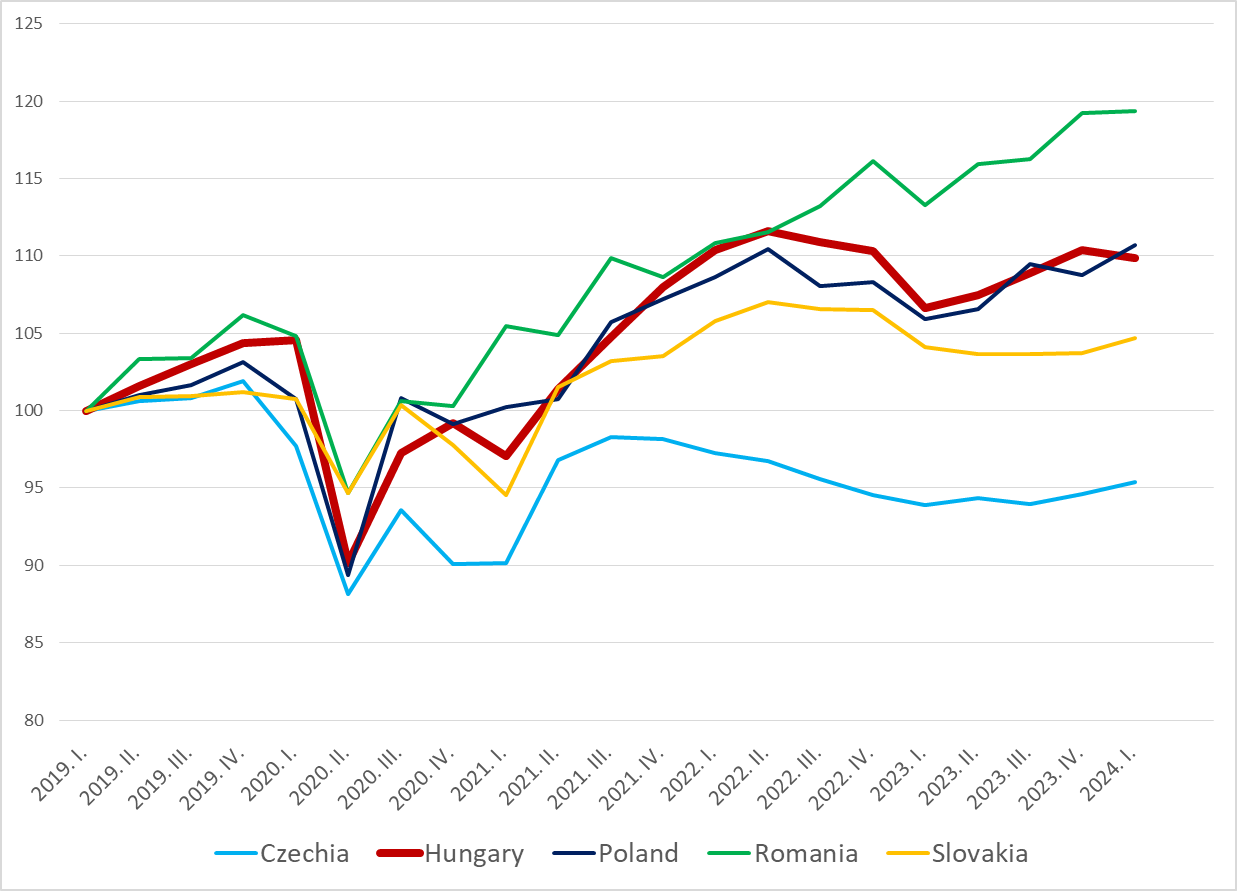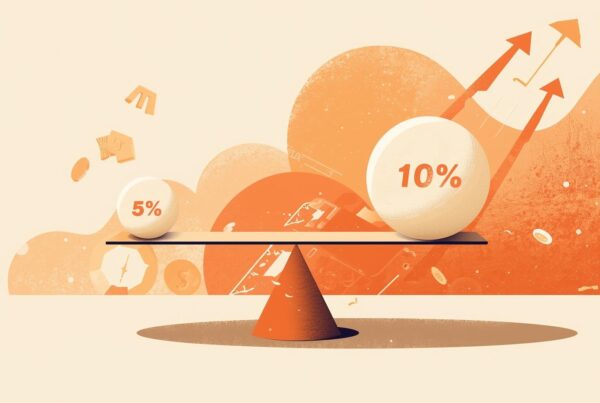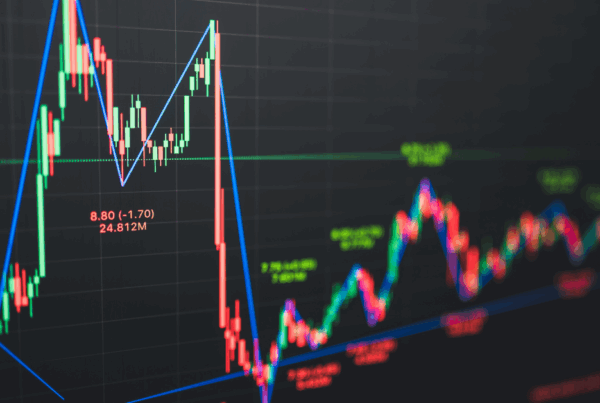Some Hungarian economists are looking for explanations for what the Minister for National Economy calls the “consumption puzzle”. In other words, why is this year’s strong real wage growth not being matched by consumption?
A popular argument is the presence of a precautionary motive. After previous years of crisis and in the shadow of the Russian-Ukrainian war, people are less inclined to spend, preferring to rebuild their savings, pay off their previous loans, or even save for the uncertain future if they can.
To better understand the dynamics of domestic consumption, it is useful to compare it with consumption data from regional countries exposed to similar geopolitical risks. In addition, it is worth taking a step back and starting the analysis from the last year before the crisis (2019) instead of looking at volatile monthly data.
Final consumption expenditure per capita in the V4 countries and Romania (Q1 2019 = 100)
Source : Eurostat (2024)
2019 was a great year for household consumption, which grew by 4.4% in one year. However, the subsequent Covid crisis brought a significant contraction, with consumption falling by almost 10% from its trough in the first quarter of 2019 to the second quarter of 2020, a larger decline than in Romania or Slovakia but slightly less than in the Czech Republic or Poland. Although consumption in the Czech Republic has not yet reached pre-crisis levels, consumption in most European countries has recovered.
Romania also stands out, where neither the huge economic growth nor the soaring consumption could be broken by the ongoing war.
The situation is different in Slovakia, Poland, and Hungary, where the energy crisis is having a major impact. Consumption has been sluggish since the war in our neighboring country in February 2022. Interestingly, Hungarian consumption has changed by almost the same percentage over the past five years as the Polish, and by the end of the fifth year, Hungary achieved a higher growth rate than Slovakia.
From another perspective, Hungarian consumption does not appear strange at all. It falls in times of crisis and rises in times of boom. Households also smooth their consumption, trying to maintain their usual standard of living and spend only part of their real income growth on additional consumption.
And speaking of real incomes, based on this year’s wage growth plans and expected inflation, real earnings will rise by around 4% in 2024, which is not outstanding compared to the expected 3-4% increase in retail sales volumes. The bias here (as with savings) is due to the strong pass-through effect (this is how the 9% rise in real earnings becomes possibble estimated by the HCSO).
In the short term, the dilemma of ailing domestic consumption is indeed interesting and important, but in the long term, and compared to other similar countries like Hungary, domestic consumption is average. Ultimately, household consumption has grown by 9.8% over the last five years by around 2% per year, in line with the regional trend.
Download full analysis






